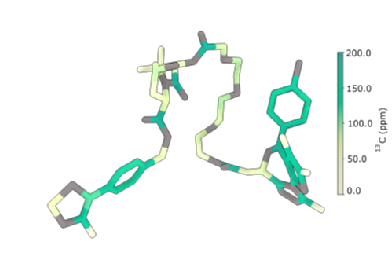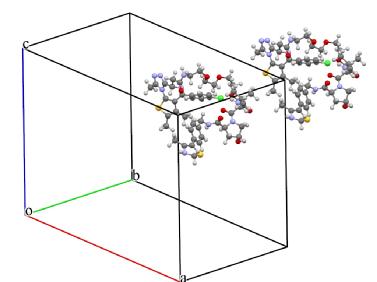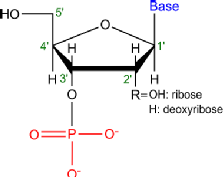Mohammed Rahman
Current Research
My current research is focused on the characterisation of new modalities for drug discovery. The project focuses on two analytical techniques, NMR crystallography and FT-ICR mass spectrometry. I am supervised by both Steven Brown and Peter O'Connor, and funded by AstraZeneca and the University of Warwick.
As a member of the Warwick solid-state NMR group and Peter O'Connor's group, I have used both 500 and 600 magnets (1H Larmor frequencies) and the Bruker solariX 12T FT-ICR MS.
In my research, I make use of CASTEP for GIPAW-DFT calculations, which are used for crystal structure assignment. One of my project involves the use of these calculations to determine the structure of a compound, where no crystal data can be obtained. I am developing the work previously completed by H.Blade et.al., 2020 in collaboration with C4X.
Using different fragmentation techniques such as; collisional activated dissociation (CAD), infrared multiphoton dissociation (IRMPD), electron induced dissociation (EID), and ultraviolet photodissociation (UVPD), I will be looking at fragmentation of these new modalities. Such compounds may contain new structural information and I am using 2D-MS to identify them.
Throughout my undergrad and postgrad I have completed various projects and modules that developed into this PhD. Here are the summaries of my two MSc projects.
MSc projects
Project 1: Developing Solid-State NMR for Application to New Pharmaceutical Drug Delivery Modalities
Supervised by Professor Steven Brown
Using new drug modalities, which implement targeted degradation as opposed to inhibition, is receiving much attention in pharmaceutical companies such as AstraZeneca for treatment of diseases. Herein, a method for calculating the chemical shifts for such molecules was presented. A solid state NMR approach would determine the intermolecular interactions and stability in its unit cell. Density functional theory (DFT) geometry optimisation was used as an iterative process to perform energy minimisation for each atom in the unit cell. DFT-based Gauge-Including Projector-Augmented Waves (GIPAW) calculations were used to predict the magnetic shielding. Subsequently, the magnetic shieldings can be converted into chemical shifts with known reference values of 1H, 13C and 15N through subtraction of the reference values from the magnetic shieldings of the nuclei.
 |
 |
|---|
Project 2: Detailed Mass Spectrometry Analysis of Oligonucleotides
Supervised by Professor Peter O'Connor
Antisense oligonucleotides consists of modified oligonucleotides that bind to mRNA and prevent protein production. In this paper, we examine the fragmentation patters of oligonucleotides from different fragmentation techniques. The acidic nature of the phosphate group favours negative mode ionisation, thus electrospray ionisation is widely used in tandem with MS. Collision induced dissociation (CID) was found to predominantly yield a−Base and w similar to infrared multiphoton dissociation (IRMPD). Furthermore, the strong absorption of the phosphate backbone at 10.6 µm results in shorter irradiation times in contrasts to proteins. The non-resonant process of ion activation by IRMPD, results in rapid conversion of the usually disregarded base loss ions into several a − Base and w, without secondary fragmentation that are seen in CID. Electron photodetachment (EPD) was shown to produce a series of d and w ions in high abundance with guanine and adenosine sites as the main target. This contrasted with ultraviolet photodissociation (UVPD), which yielded several different types of ions in low abundance. Therefore, EPD can be used to pinpoint locations of modifications in oligonucleotides.
 |
 |
|---|
Academic Background
Qualification |
Years |
| PhD, University of Warwick | 2020 - 2023 |
| MSc in Analytical Science (Distinction), University of Warwick | 2019 - 2020 |
| BSc in Chemistry with sandwich year (First-class hons), University of Surrey | 2015 - 2019 |
Academic Societies
- Royal Society of Chemistry (RSC)
- British Mass Spectrometry Society (BMSS)
Awards
- Margaret Elvidge Prize for excellence in Organic Chemistry throughout the programme, 2019, University of Surrey
Publications
Rahman M, Couchman L, Povstyan V, Bainbridge V, Kipper K, El-Nahhas T, Johnston A, Holt D. Rapid Quantitation of Flecainide in Human Plasma for Therapeutic Drug Monitoring Using Liquid Chromatography and Time-of-Flight Mass Spectrometry. Ther Drug Monit. 2019 Jun;41(3):391-395. doi: 10.1097/FTD.0000000000000586. PMID: 30520831.
Contact Details
mohammed.rahman.1@warwick.ac.uk
Address
MOAC, Senate House
University of Warwick,
Coventry, United Kingdom
CV4 7AL

